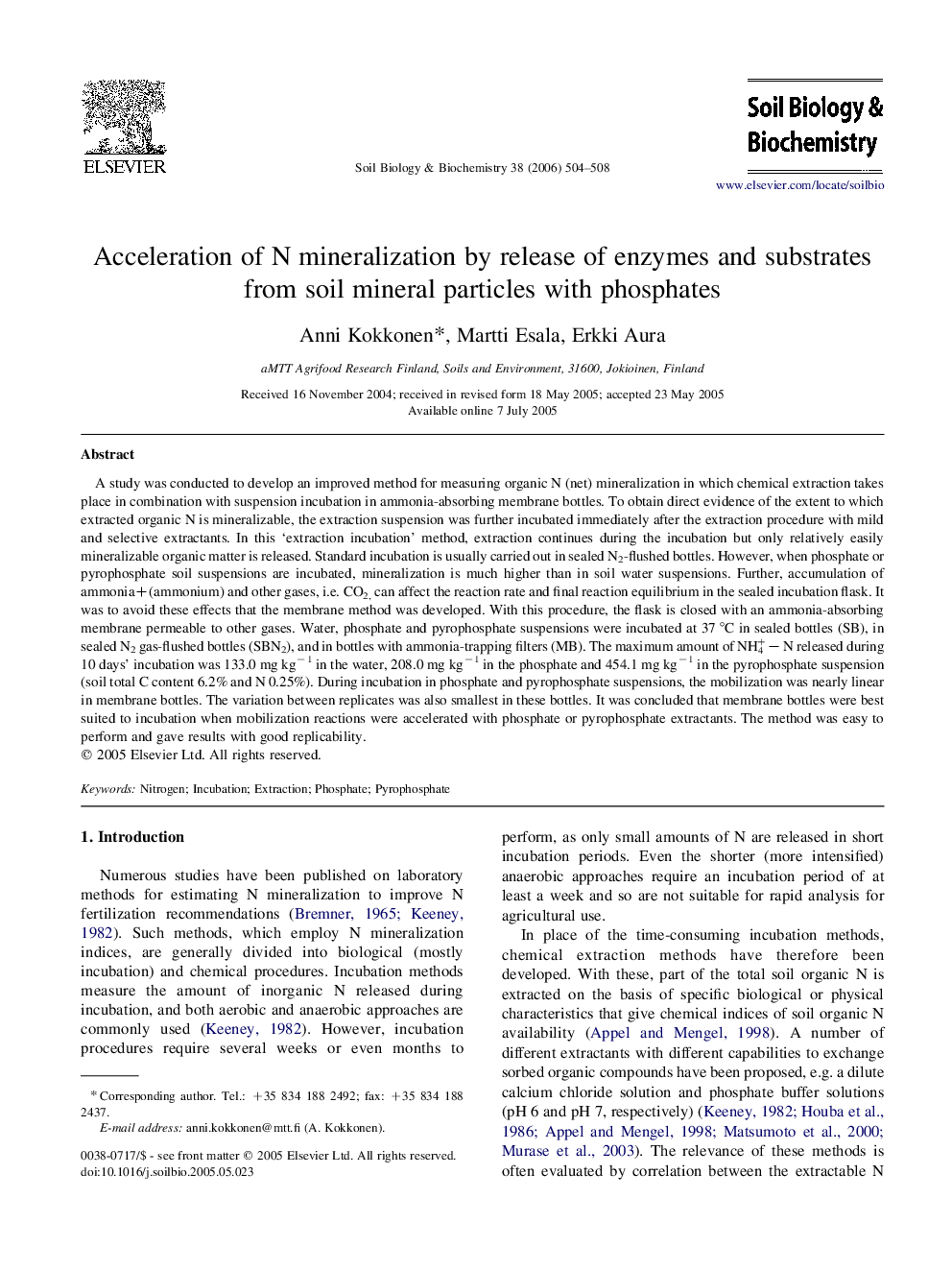| Article ID | Journal | Published Year | Pages | File Type |
|---|---|---|---|---|
| 2026689 | Soil Biology and Biochemistry | 2006 | 5 Pages |
A study was conducted to develop an improved method for measuring organic N (net) mineralization in which chemical extraction takes place in combination with suspension incubation in ammonia-absorbing membrane bottles. To obtain direct evidence of the extent to which extracted organic N is mineralizable, the extraction suspension was further incubated immediately after the extraction procedure with mild and selective extractants. In this ‘extraction incubation’ method, extraction continues during the incubation but only relatively easily mineralizable organic matter is released. Standard incubation is usually carried out in sealed N2-flushed bottles. However, when phosphate or pyrophosphate soil suspensions are incubated, mineralization is much higher than in soil water suspensions. Further, accumulation of ammonia+(ammonium) and other gases, i.e. CO2, can affect the reaction rate and final reaction equilibrium in the sealed incubation flask. It was to avoid these effects that the membrane method was developed. With this procedure, the flask is closed with an ammonia-absorbing membrane permeable to other gases. Water, phosphate and pyrophosphate suspensions were incubated at 37 °C in sealed bottles (SB), in sealed N2 gas-flushed bottles (SBN2), and in bottles with ammonia-trapping filters (MB). The maximum amount of NH4+−N released during 10 days' incubation was 133.0 mg kg−1 in the water, 208.0 mg kg−1 in the phosphate and 454.1 mg kg−1 in the pyrophosphate suspension (soil total C content 6.2% and N 0.25%). During incubation in phosphate and pyrophosphate suspensions, the mobilization was nearly linear in membrane bottles. The variation between replicates was also smallest in these bottles. It was concluded that membrane bottles were best suited to incubation when mobilization reactions were accelerated with phosphate or pyrophosphate extractants. The method was easy to perform and gave results with good replicability.
